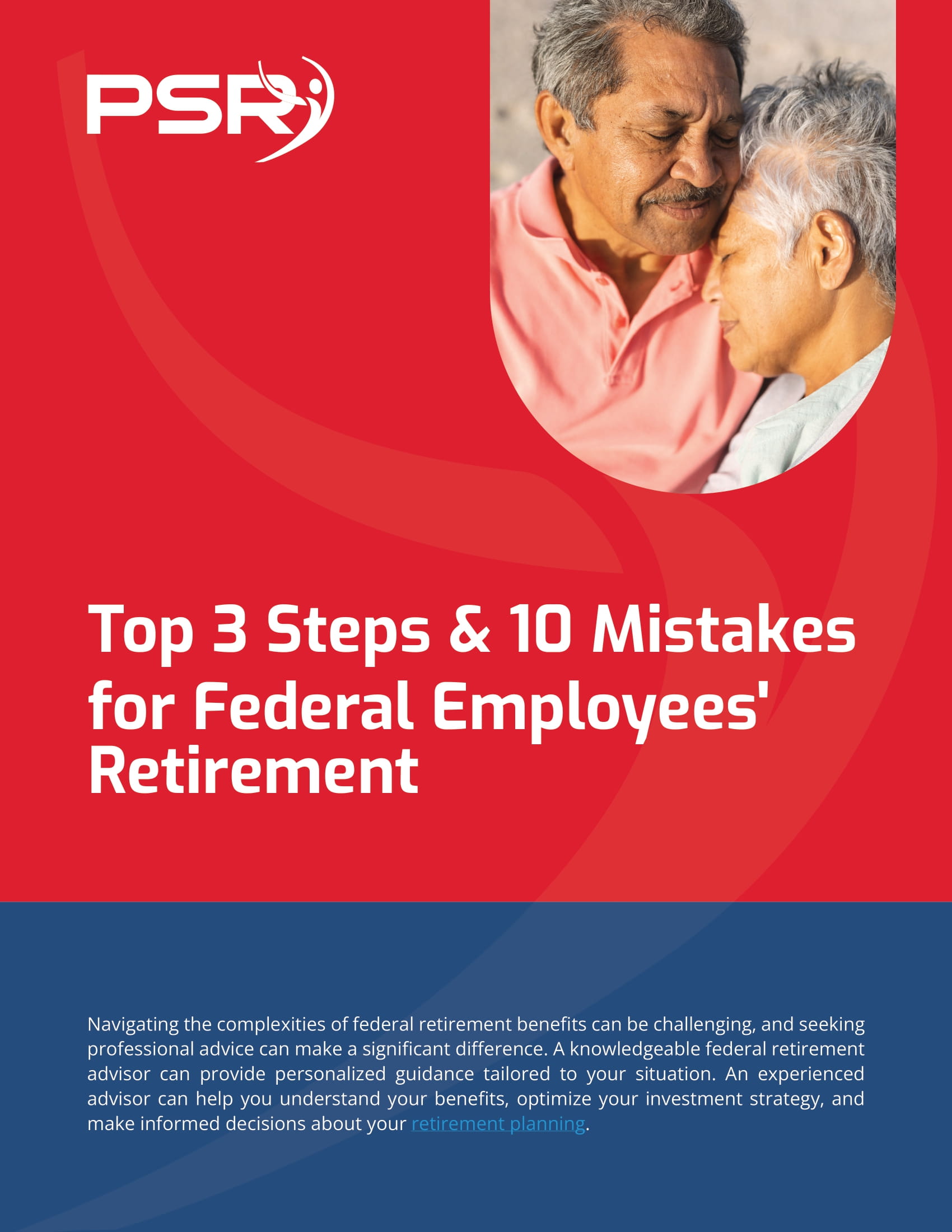Key Takeaways
-
Proactive financial planning is essential for federal employees to maximize retirement benefits and secure their future.
-
Understanding and leveraging available retirement systems can help you achieve long-term financial stability.
Building a Strong Financial Foundation
As a federal employee, you have unique opportunities to prepare for retirement and achieve financial security. But this requires a proactive approach to understanding your benefits, making informed choices, and planning for the long term. By doing so, you can maximize the value of your employment while laying the groundwork for a comfortable future.
- Also Read: Postal Employees, Big Changes Are Coming to Your Benefits in 2025—Here’s What You Need to Watch Out For
- Also Read: Military Buyback Programs Explained: Here’s How Federal Employees Can Use Them to Boost Their Pensions
- Also Read: Joining Civilian and Military Benefits—Why It’s the Best Move You’ll Make for Retirement
Understanding Your Retirement System
The first step in effective financial planning is to understand the retirement system you’re a part of. Federal employees typically fall under one of two systems:
-
Federal Employees Retirement System (FERS): This is the primary system covering the majority of today’s workforce. FERS includes three components: a basic annuity, Social Security, and the Thrift Savings Plan (TSP).
-
Civil Service Retirement System (CSRS): A legacy system that offers more generous pensions but does not include Social Security benefits. Only a small percentage of federal workers are still covered under CSRS.
Knowing which system applies to you helps you identify the resources available and the steps required to maximize your benefits.
Setting Retirement Goals
Your retirement goals are the cornerstone of your financial plan. Start by asking yourself:
-
What age do I want to retire? Many federal employees aim for early retirement through options like MRA+10 under FERS, which allows reduced benefits starting at the Minimum Retirement Age (MRA).
-
What lifestyle do I envision? Your retirement savings need to align with your plans, whether that means traveling, downsizing, or supporting family.
-
How much income will I need? Federal employees often target an 80% income replacement rate for a comfortable retirement.
By clearly defining your goals, you’ll have a framework to guide your decisions.
Maximizing Your Thrift Savings Plan (TSP)
The Thrift Savings Plan is a key component of federal retirement benefits. To make the most of your TSP:
-
Contribute Regularly: Aim to contribute the maximum annual limit of $23,500, or more if you qualify for catch-up contributions. Employees aged 60 to 63 have increased limits in 2025, allowing additional savings.
-
Take Advantage of Matching: FERS employees receive matching contributions up to 5% of their salary. Ensure you’re contributing enough to capture the full match—it’s free money!
-
Diversify Investments: The TSP offers several fund options, from conservative G Fund investments to riskier C Fund stocks. Diversification can help balance risk and growth potential.
-
Monitor Your Account: Regularly review your TSP balance and adjust allocations to align with your long-term goals and risk tolerance.
Coordinating Benefits with Medicare
For retirees, healthcare costs can be a major expense. Federal Employees Health Benefits (FEHB) plans and Medicare offer robust coverage options. When you become eligible for Medicare at 65, coordinating it with your FEHB plan can help reduce out-of-pocket expenses and ensure comprehensive coverage.
-
Medicare Part A: Typically premium-free and covers hospital stays.
-
Medicare Part B: Requires a monthly premium of $185 in 2025 but provides essential medical coverage.
-
Medicare Part D: Covers prescription drugs, with a $2,000 annual out-of-pocket cap this year.
Many federal retirees opt to maintain their FEHB plan as a supplement to Medicare, creating a strong safety net for healthcare.
Planning for Life After Work
Retirement is about more than just financial stability; it’s also a time to pursue personal goals and passions. To prepare for this new phase:
-
Develop a Vision: What do you want your retirement to look like? Whether it’s volunteering, traveling, or starting a new hobby, having a clear vision can guide your planning.
-
Build an Emergency Fund: Ensure you have 6-12 months’ worth of expenses in liquid savings to cover unexpected costs.
-
Stay Active: Physical and mental health are crucial for enjoying retirement. Consider activities that keep you engaged and healthy.
-
Evaluate Housing Needs: Decide whether to downsize, relocate, or stay put. Housing can be a significant factor in your financial and lifestyle decisions.
Addressing Inflation and Longevity
Inflation and increased life expectancy are two major challenges for retirees. Federal employees can mitigate these risks by:
-
Taking Cost-of-Living Adjustments (COLA) into Account: FERS and CSRS annuities include COLAs, which help your income keep pace with inflation.
-
Maintaining Growth-Oriented Investments: While safer investments like bonds are important, retaining some growth-focused assets in your portfolio can combat inflation.
-
Planning for Longevity: Assume you’ll live to 90 or beyond. This conservative estimate ensures your savings last throughout retirement.
Understanding Social Security Benefits
Social Security is a significant part of retirement income for FERS employees. To maximize your benefits:
-
Know Your Full Retirement Age (FRA): For most federal workers, the FRA is 67. Delaying benefits past this age increases your monthly payments.
-
Be Aware of the Windfall Elimination Provision (WEP): CSRS retirees may see reduced Social Security benefits if they didn’t pay into the system during federal employment.
-
Plan Strategically: Decide when to claim benefits based on your financial needs and health outlook. For many, waiting until 70 offers the highest monthly payout.
Leveraging Life Insurance and Survivor Benefits
Federal employees have access to the Federal Employees’ Group Life Insurance (FEGLI) program, which provides financial security for your family. Additionally, survivor benefits under FERS and CSRS can support your spouse or dependents after your passing.
-
Evaluate FEGLI Coverage: As premiums increase with age, reassess your needs periodically to avoid overpaying.
-
Understand Survivor Benefits: Your spouse may receive up to 50% of your FERS annuity. Make sure your elections align with your family’s needs.
Planning for Taxes in Retirement
Taxes can significantly impact your retirement income. Federal employees should plan for:
-
State and Federal Taxes: Most pensions and TSP withdrawals are taxable.
-
Required Minimum Distributions (RMDs): Starting at age 73, you must take RMDs from your TSP and other retirement accounts.
-
Tax Diversification: Contribute to both traditional and Roth accounts to create flexibility in managing your tax liability.
Staying Informed and Adjusting Your Plan
Financial planning is not a one-time event. Regularly reviewing your retirement plan ensures you’re on track and able to adjust to changes in your circumstances or benefits.
-
Stay Updated: Federal policies and benefits can change. Keep an eye on updates from the Office of Personnel Management (OPM) or your agency.
-
Consult Professionals: Financial planners and retirement specialists can provide tailored advice for federal employees.
-
Adjust as Needed: Life events like marriage, divorce, or health changes may require updates to your plan.
Ensuring a Secure and Enjoyable Retirement
By taking advantage of the benefits available to you as a federal employee and planning strategically, you can build a financially secure and fulfilling retirement. Focus on setting clear goals, maximizing your TSP, and staying informed about your options. The more effort you put into planning today, the more you’ll enjoy the rewards tomorrow.










